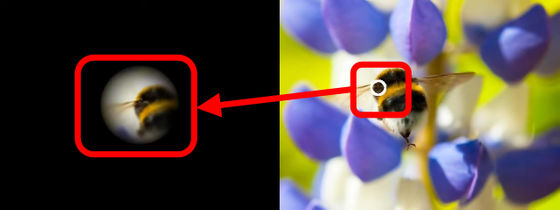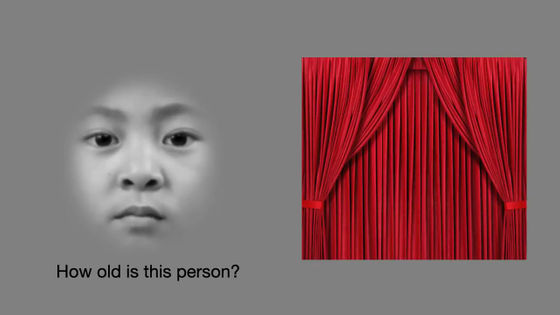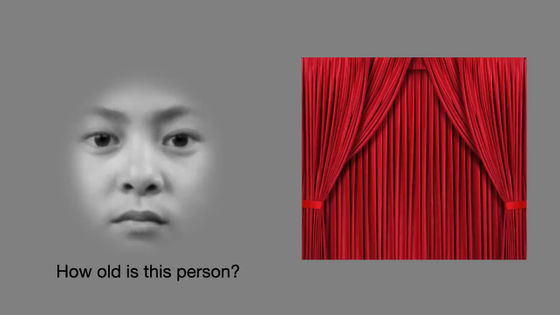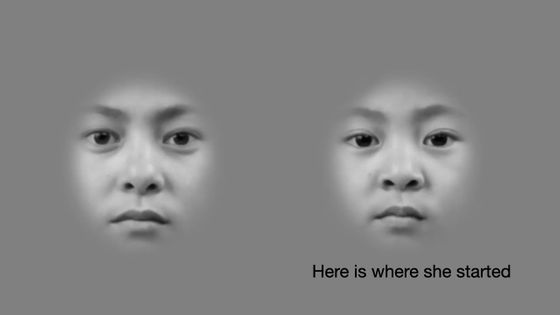As a result of research that the image we are watching is a 'digest of the past 15 seconds', it became clear why the brain can efficiently process vast amounts of visual information.

Past research has revealed that the brain performs extremely sophisticated and complex information processing, such as the activity of the human brain per second is comparable to the 40 minutes of the supercomputer Kyo. New research efficiently processes visual information, which accounts for most of the information that enters the brain, because the brain sees 'aggregation of images over the last 15 seconds, not real-time visual information.' It was confirmed that.
Illusion of visual stability through active perceptual serial dependence
https://www.science.org/doi/10.1126/sciadv.abk2480
Everything we see is a mash-up of the brain's last 15 seconds of visual information
https://theconversation.com/everything-we-see-is-a-mash-up-of-the-brains-last-15-seconds-of-visual-information-175577
Like our social media feeds, our brains take a little while to update: New study shows a 15-second lag in processing visual stimuli --ScienceDaily
https://www.sciencedaily.com/releases/2022/01/220113194121.htm
The image of the world where the color and shape are constantly changing is jumping into the human eye, and the image changes greatly even with subtle movements of the eyes and head and blinking. Associate Professor Mauro Nassi, a psychologist at the University of Aberdeen in Scotland, and Professor David Whitney at the University of California, Berkeley, showed the following movie as an example of how fast the images entering the brain are changing. ..
Visual (In) stability --YouTube
In this image, the place where the human eye is looking is shown by a white circle on the right side, and the image of that part is displayed on the left side. When you play it back, you can see that the visual information changes very significantly due to the small movements of the eyeballs. Moreover, since the photo on the right is a still image, the information received from the constantly changing world of the human brain is not comparable to this image.

Despite processing such a huge amount of video information, the video seen by the human brain is smooth, and there are no processing omissions or skips. In this way, in order to investigate why the brain produces stable images, Mr. Nassi and his colleagues conducted an experiment in which about 100 subjects recruited via the Internet were shown images that change over time. I did it.
The images used in the experiment can be seen from the following.
When the video starts, two child faces will be displayed and you will be informed that 'This is a twin face and the age is the same.' Only the center of the face was used in the footage so that hairstyles and the like do not give a clue about age.

Next, hide the face on the right and ask them to keep looking at the face on the left.

Then, after about 30 seconds, he asked me how old the child's face on the left would look like.

In fact, the face on the left grows little by little in 30 seconds and eventually becomes a completely different face.

As a result of this experiment, the age of the face that the subject answered was not the face at the time when 30 seconds passed, but the face that was a little younger 10 to 15 seconds ago. This means that the brain is not processing the video information in real time, but is looking at the averaged video seen in the last 15 seconds. Previous studies have also shown that what the brain sees is the culmination of the last 15 seconds, but this study states that 'physically changing objects are dragged by past perceptions and change. A new video processing mechanism has been discovered that 'looks like it doesn't.'
Regarding this result, Nassi et al. 'Since the update time of the brain is 15 seconds, we are not watching the latest video, but the previous video. In short, it takes time to watch the video. By averaging, the perception is stabilized. This is just an app that integrates images into one every 15 seconds and enables efficient processing of landscapes in daily life. If our brain was constantly processing information in real time, our world would be a chaotic spectacle of ever-changing light, shadow and movement. Let's do it. '
There is also a downside to the mechanism for efficiently processing visual information while reusing past images. It's okay if the actors and stuntmen are swapped for each scene in the movie, but it's okay if you don't notice it, but when a radiologist examines hundreds of X-rays one after another, it's the one you're looking at. If the previous photo is mixed, it may lead to oversight of abnormalities such as tumors.
From this point, Nassi et al. 'The slow refresh rate of the visual system makes our eyes look to the past, so we may not notice the change. This mechanism makes the world continuous and stable. It helps us to recognize it as something we have done, but at the same time we should not forget that the decisions we make every day are strongly dependent on what we have seen in the past, not the present. '
Related Posts:







